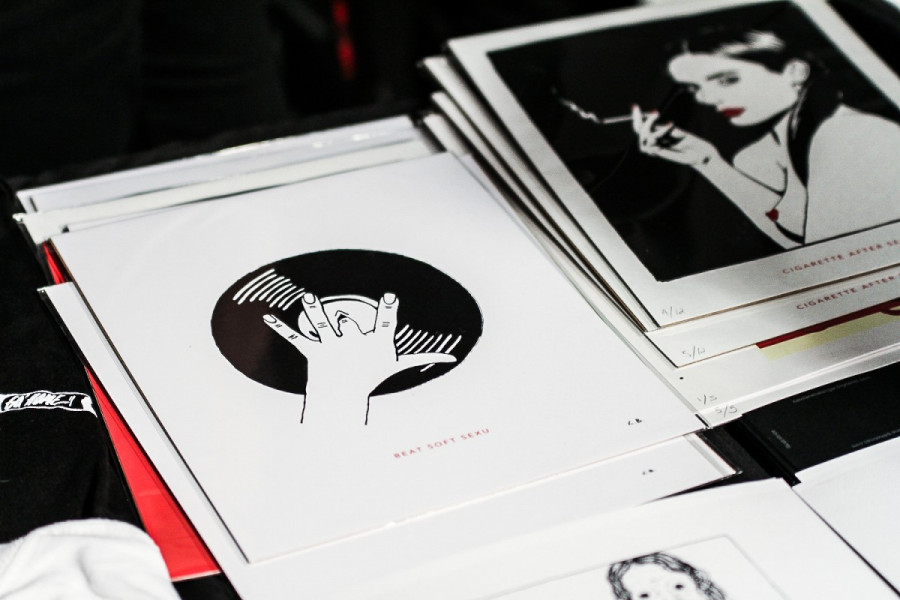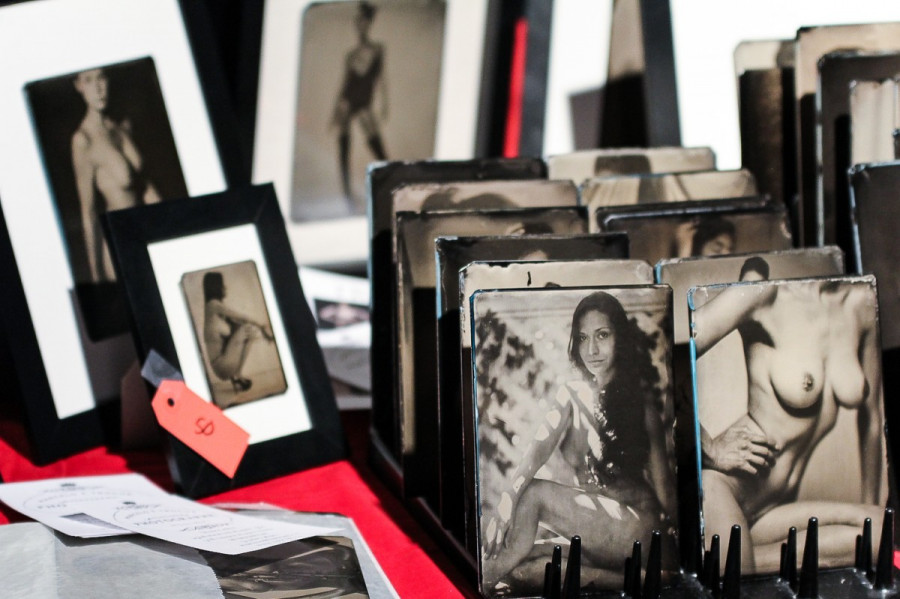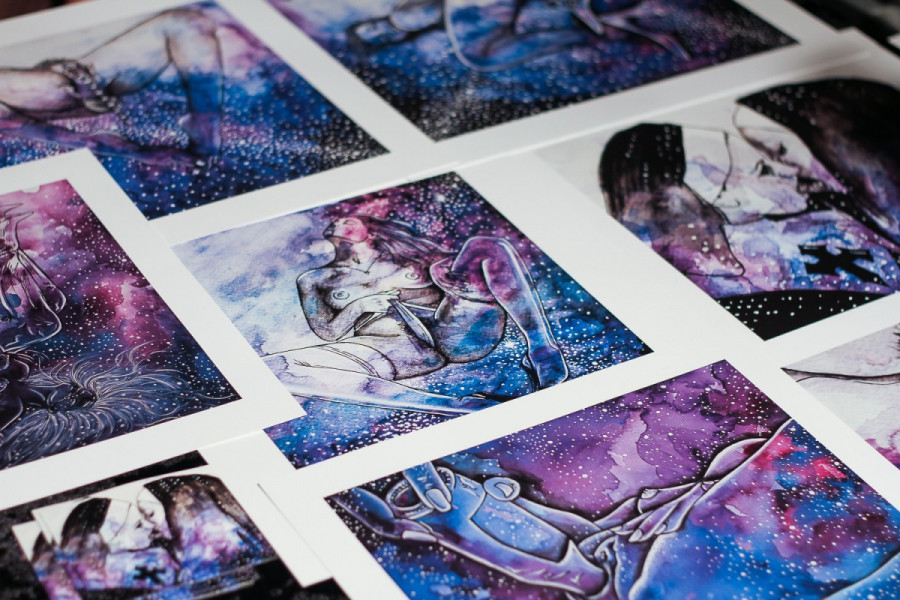Erotic Art Market Shows Why There Should Be No Taboo Around Sexual Art
Zines, Photography, Paintings and More—Les Bêtes Sauvages Reveal the Many Facets of Art
In the small, inviting space of the Eastern Bloc gallery’s romantically lit industrial rooms and corridors, over 100 people rolled through on Valentine’s Day to take in some erotic art.
Les bêtes sauvages, an independent art publication focusing on erotica, gathered artists of a variety of mediums for the Erotic Art Market to display their art for sale while a DJ played low key, sensual music for the crowd.
Claire Martinant, artistic director of the publication and primary organizer of the event, said that variety was crucial when planning the market.
“It was important here that it was also diverse, it wasn’t just a specific kind of art or just naked bodies or around sexuality, but [that] it goes a little more general and maybe beyond what we usually think erotic art can be,” she said.
The art on display demonstrated a diversity that many don’t realize is present in erotic art. Photography, zines, pendants, film, and candles accompanied the paintings and drawings, and subject matter varied greatly between artists.
Blairelle and Gigi, who asked to go by their first names because of the subject matter of their art, were present to sell their new zine: “Les Ejaculeuses”, a product of the experiences of the two women. In it, they discuss the little-understood phenomenon of female ejaculation.
“I think what we talk about in our zine is kind of taboo,” said Blairelle. “It’s either being really fetishized in porn or being [depicted as] disgusting.” The pair wanted to make something between the every day and the fantasy. “For women to just embrace it, recognize it’s something in the spectrum of sexuality and we can talk about it,” she added.

They end the zine with an explanation of how female ejaculation works, Gigi said. “We wanted people just to be able to be open to talk about it.”
Meanwhile, Marcelo Troche was selling his tintype nude photography. Tintype is an old photographic technique from the 1850s.
“It’s fun to do. It’s very slow,” he said. “You get to know the model a bit more when you’re doing it.”
The models in his photos are mostly nude, sitting or standing in relaxed poses. The technique he uses gives the photos an antique quality, but Troche says some of them are just a few weeks old.
“I often use the female body in what I do, but in a positive light. Taking back our sexuality, with all ways possible: the colour, the touch, the shapes,” —Carolane Bélanger
“I don’t find my photography erotic. I like to have a lot of skin in my work, I find in black and white it’s really nice, it’s really smooth. I think everybody is nice, naturally,” he said.
He explained that he thinks people are often not very open minded about nude or erotic art, but exposure helps people see that it shouldn’t be a taboo.
“I have a kid and he’s been exposed to my photography since he was young, so for him seeing naked people in pictures and books, it’s no big deal,” he said. “It depends on how you grow up, I guess, and how your parents are.”
Martinant agrees that many people are closed off from the idea of erotica in art. The market was a way to challenge people’s preconceived notions about erotic art being something crude.
“I was just surprised nobody did erotic art markets before me, so that’s why I organized one,” she said. “I think it’s still taboo.”
She added that many artists do erotic art on the side, but not as their main work. “The purpose of this market was to gather all those artists and all those voices around that subject that people have stereotypes or prejudices [about].”
Carolane Bélanger, an artist who was present to sell some of her prints, believes erotic art is an effective way to challenge societal constraints around sexuality. Her art, which she characterizes as sensual and not necessarily erotic, is meant to reappropriate women’s sexual desires from the mainstream and usually male-focused narrative of sexuality.

“I often use the female body in what I do, but in a positive light. Taking back our sexuality, with all ways possible: the colour, the touch, the shapes,” she said.
Her artwork explores female masturbation, and features female figures with a strong gaze posing topless in a way that doesn’t exploit their nudity. A print of a woman smoking a cigarette, one nipple visible over her crossed arm, hung on the wall behind Bélanger’s table at the market.
“My whole family, no one wants to buy my art because it’s too sexual. ‘Do you do anything besides sex?’ they asked,” she said. “There’s a big taboo, but it’s in our day-to-day lives. There shouldn’t be.”
Bélanger explained that that’s why she believes events like the market are so important. “This is a good event today, that demystifies the taboo around erotic art. It’s not vulgar. On the contrary, it can be in good taste, be educational, and at the same time it can be beautiful.”
Martinant said that they hope to have another Erotic Art Market next Valentine’s Day as well. She said it’s a way to raise awareness of the possibilities of erotic art. “Because for me, it’s just so wide,” she said. “It’s not just one thing but can be many things, as many as we are.”


